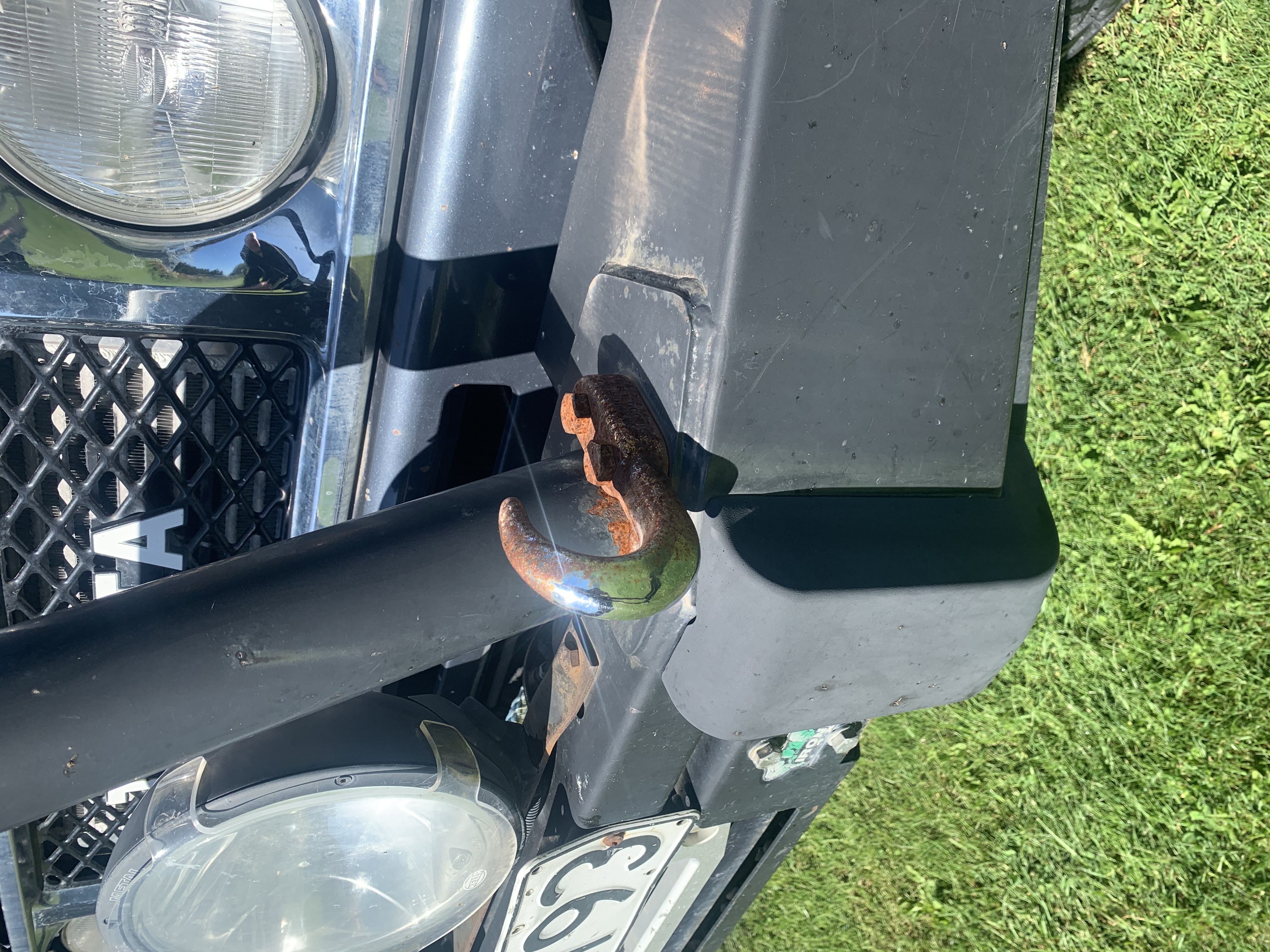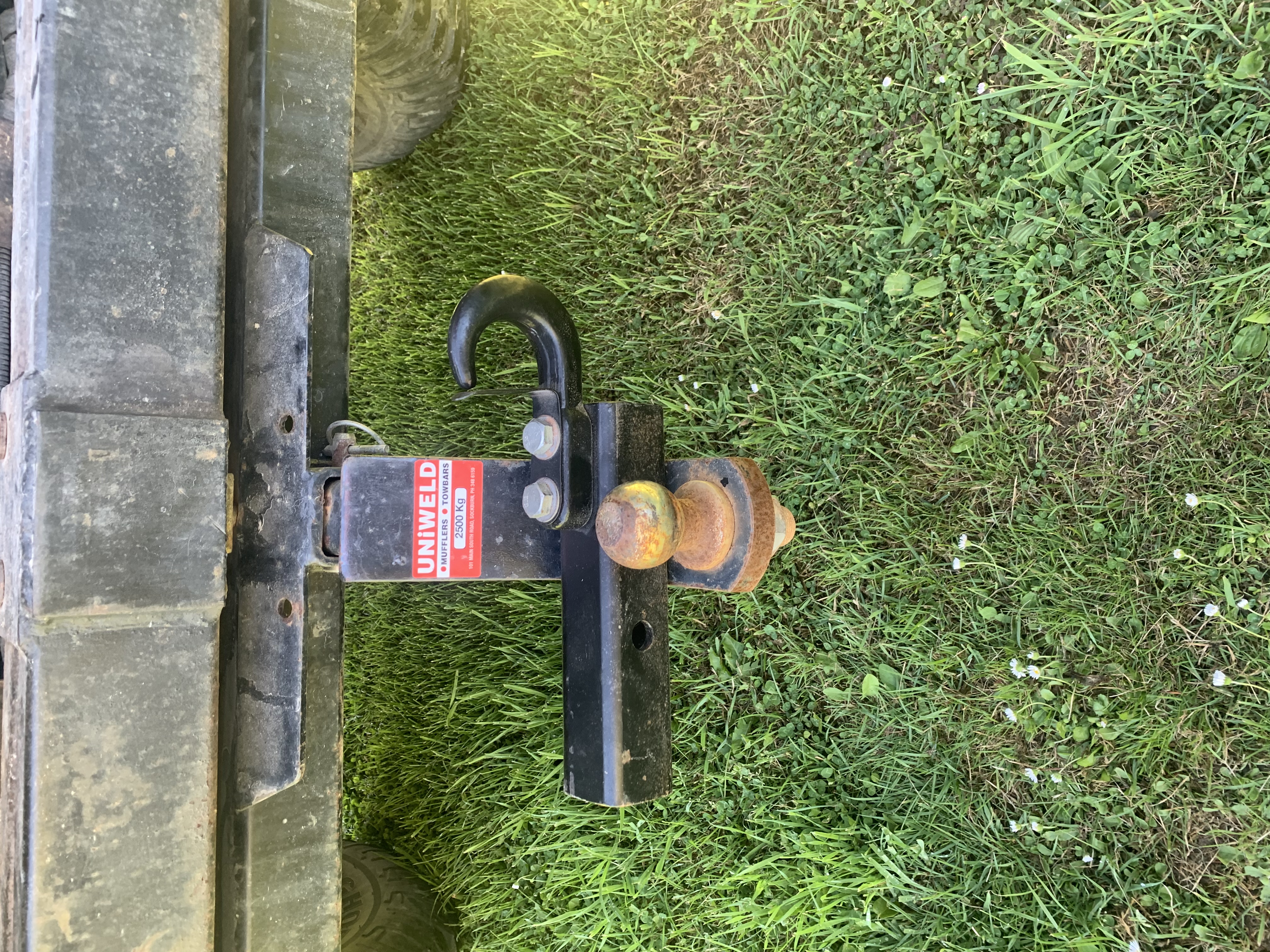These are the recovery hooks. Are they up to standard?
Welcome guest, is this your first visit? Create Account now to join.
Welcome to the NZ Hunting and Shooting Forums.
Search Forums
User Tag List
+ Reply to Thread
Results 1 to 15 of 35
Thread: 4x4 accessories
Hybrid View
-
18-11-2023, 10:19 AM #1Member

- Join Date
- Mar 2020
- Location
- Geraldine
- Posts
- 563
-
18-11-2023, 10:35 AM #2
The one on the bumper, I wouldn’t use. There is a bracket the mounts the winch to the chassis, but the bumper is mounted using sacrificial brackets that give way in a frontal impact. So I’d be concerned pulling directly from the bumper might blow those out. My observations apply to a 2014 arb bar on my hilux.
Sent from my iPhone using Tapatalk
-
19-11-2023, 08:52 PM #3Member

- Join Date
- Dec 2021
- Location
- Tauranga
- Posts
- 5,879
The front one is likely strong enough, but there are considerations with using a hook in that location. It's about 3-400mm higher than the equivalent chassis point, which doesn't seem like much but can transfer a surprising amount of load in the form of down pull onto the front end which is adding weight to the front suspension components. My preference is to have that style hook down low, bolted directly onto the side of the chassis rail using some of those bolts that you identified in the photo. If access is a concern, you can get a keeper spring and fit a short (500mm long) 3 ton soft webbing link which means you don't have to go grubbing in the mud to hook up to it. Just leave it securely hooked up to the winch or something like that...
The one at the back is a nup for me, might as well just use the bloody towbar looping a tow strap around the towbar extension in front of the towball nut (not using the towball for safety sake). Relying on a pin and a wiggly piece of square tube for snatching is a recipe for doom and despair, as the forces can crack the tube at the corners or bend the side walls of the tube extension or even tear the walls of the tubes where the pin goes through. Better off hard bolting the recovery hook to the back end chassis in a similar method to the front end, as low as you can get.
-
19-11-2023, 10:30 PM #4Member

- Join Date
- Mar 2020
- Location
- Geraldine
- Posts
- 563
All of the points you’ve bought up are things I’ve considered but being a nubie just dismissed. I have a solid hook (4 bolt) that I could attach for recovery. I’ll have look at options for that front recovery attachment. Access through the bumper would be difficult.
Thankyou for advice.
-
19-11-2023, 11:14 PM #5Member

- Join Date
- Dec 2021
- Location
- Tauranga
- Posts
- 5,879
Low as possible, below the bumper. It causes a slight lifting effect which helps the front end ride up and over/out from whatever you parked in - the opposite of what the high mounted recovery point does. The high mounted recovery point tends to pull down into the obstruction that stopped you, acts as a 'magnifier' of the size of the obstruction and the parts of the vehicle that tend to take the load are the suspension components like the ball joints, tie rods, swivel bearings depending on which type of front end you have. That said, 99% of the time you get away with recovering from a high snatch point and don't notice the difference in pull point height but getting the vehicle out but finding you've immobilised it in the process - suckful. This risk is one of my reasons for preferring recovery to the rear if possible, i.e. pull backwards out from the way it went into the oops. There's a reason the thing stopped...
Similar Threads
-
Firearm Accessories
By kawekakid in forum Firearms, Optics and AccessoriesReplies: 0Last Post: 06-03-2021, 12:52 PM -
Anyone know where to buy AR accessories?
By Ryan85 in forum Firearms, Optics and AccessoriesReplies: 5Last Post: 28-08-2019, 12:09 PM
Tags for this Thread
Welcome to NZ Hunting and Shooting Forums! We see you're new here, or arn't logged in. Create an account, and Login for full access including our FREE BUY and SELL section Register NOW!!





 60Likes
60Likes LinkBack URL
LinkBack URL About LinkBacks
About LinkBacks





 Reply With Quote
Reply With Quote



Bookmarks